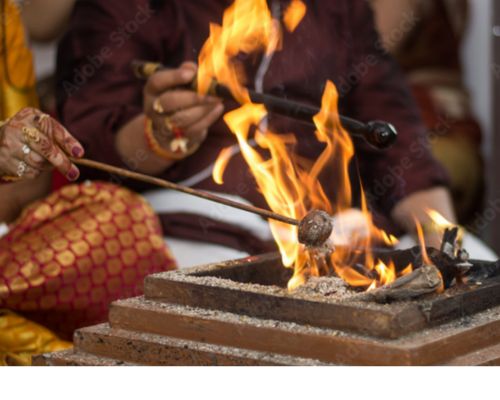
"शांति हवन" एक हिन्दू धर्म में किया जाने वाला धार्मिक अनुष्ठान है जिसका उद्देश्य शांति, समृद्धि और सुख की प्राप्ति है। इस अभियांत्रिकी को "हवन" (या "होम" या "यज्ञ" के रूप में भी जाना जाता है) कहा जाता है, और इसे प्राचीन समय से हिन्दू धर्म में एक महत्वपूर्ण परंपरा माना जाता है। शांति हवन को व्यक्ति या परिवार अपने जीवन में आने वाली किसी भी संकट, दोष या किसी भी प्रकार के अभिचार से बचने या शुभ मंगल की कामना के लिए किया जाता है। शांति हवन की विधि सामान्यत: निम्नलिखित चरणों में की जाती है: सामग्री का चयन: हवन के लिए सामग्री का चयन करना महत्वपूर्ण है। इसमें घी (क्लैरिफाइड बटर), हवन सामग्री (सुगंधित द्रव्यों का मिश्रण), हवन कुंड (पवित्र अग्नि का कुंड) और आहुतियाँ (अर्पण करने के लिए सामग्री) शामिल होती हैं। हवन कुंड की तैयारी: हवन कुंड का निर्माण किया जाता है, जो एक छोटा सा अग्नि कुंड होता है जिसमें पवित्र अग्नि जलाई जाती है। कुंड को पवित्र और शुद्ध रखना जरूरी है। मंत्रों का पाठ: पुरोहित या हवन करने वाला विशेष वैदिक मंत्रों का उच्चारण करता है जो शांति, समृद्धि और सुख को आमंत्रित करने के लिए होते हैं। आहुतियों का देने का विधि: हवन करते समय, मंत्रों के साथ-साथ आहुतियाँ अग्नि में डाली जाती हैं। प्रत्येक आहुति के साथ विशेष मंत्र का उच्चारण होता है। शांतिपथ का उच्चारण: हवन का पूरा होने पर शांतिपथ का उच्चारण किया जाता है, जिसमें शांति और मंगल की प्रार्थना होती है। शांति हवन को ध्यानपूर्वक और पवित्रता के साथ करना चाहिए। यह अनुष्ठान व्यक्ति को मानसिक शांति, शारीरिक स्वास्थ्य और समृद्धि प्रदान करने का उद्देश्य रखता है। हवन का महत्व इसमें है कि यह मन, वचन और कर्म को शुद्ध रखने की क्षमता रखता है और हिन्दू परंपरा में एक पवित्र और शुद्धिकरण अभ्यास के रूप में कार्य करता हैं।
"Shanti Havan" is a religious ritual performed in Hinduism to invoke peace, prosperity, and well-being. This ceremony, also known as a "Havan" (or "Homa" or "Yajna"), has been a significant tradition in Hinduism for ancient times. Shanti Havan is conducted by individuals or families to ward off troubles, negative influences, or any form of adversity in their lives, seeking positive outcomes. The procedure for Shanti Havan typically involves the following steps: Selection of Ingredients: Choosing the right materials for the Havan is crucial. These include ghee (clarified butter), Havan Samagri (a mixture of aromatic substances), Havan Kund (the sacred fire pit), and Ahutis (offerings). Preparation of Havan Kund: The construction of a Havan Kund, a small fire pit where the sacred fire is kindled, is an essential step. It is important to keep the Kund pure and sanctified. Recitation of Mantras: A priest or the one performing the Havan recites specific Vedic mantras that are aimed at invoking peace, prosperity, and well-being. Offering of Ahutis: During the Havan, offerings (Ahutis) are made into the fire along with the chanting of mantras. Each offering is accompanied by the recitation of special mantras. Recitation of Shantipath: After the completion of the Havan, a concluding prayer called Shantipath is recited, seeking peace and auspiciousness. Shanti Havan should be conducted with focus, sincerity, and purity. This ritual is intended to bring mental peace, physical well-being, and prosperity to the individual or family performing it. The significance of Havan lies in its ability to cleanse the mind, body, and actions, serving as a sacred and purifying practice in the Hindu tradition.


Book Online The Best Arya Samaj Pandit Ji And Arya Samaj Mandir nearest You. For Shanti Havan, Grih pravesh, Marriage Puja, one day marriage Registration, Love Marriage, Last Rites, Last Journey, And,Cremation Grounds.
